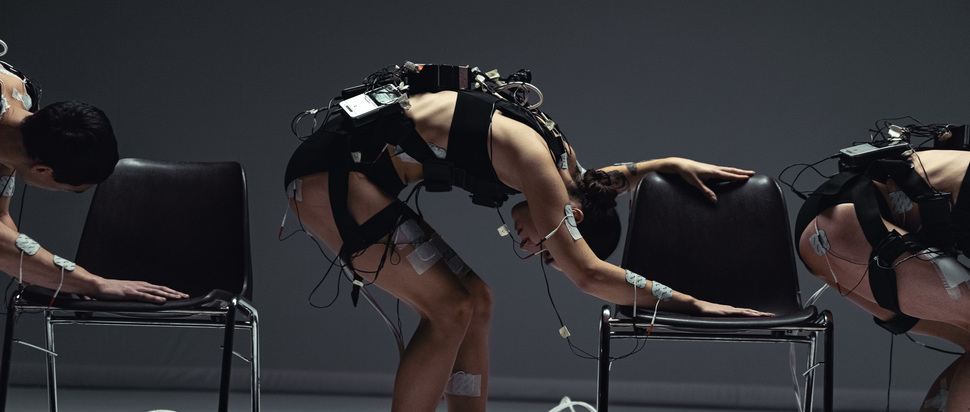The Body Is Disappearing: AI at the Edinburgh Fringe
Our theatre editor asks what the use of generative AI means for creativity in performance
In May of this year, I got my first email about an 'AI-powered' Fringe show. Without pointing my Luddite gun at any specific projects, let me break down why I will personally never cover a show that advertises its 'collaboration' with AI, Chat GPT or other Language Learning Models (LLMs).
I don't blame artists for wanting to cash in on a technology that has seen explosive growth, both in the labour landscape and in cultural consciousness. To users, generative AI technologies may seem like magical robots in our phones that solve our problems. But these technologies do have physical bodies – they live in data centres, temperature-controlled buildings run by humans and cooled by fresh water. According to an MIT report titled Generative AI’s environmental impact, one of the things that makes asking Chat GPT something different from searching something in one of our engines of yore is the 'power density' required to perform that task. By now, most of us have heard the adage that one exchange with Chat GPT is like dumping out a bottle of fresh water, consuming seven or eight times more energy than 'typical computing workload.' This is alarming in and of itself, but the meaning of Chat GPT's infiltration into our working and creative lives is even more insidious.
There's labour involved, too – a lot of it. These products steal our work; if you use Google Drive, WeTransfer, or similar platforms, chances are that your fan fiction drafts and photo dumps have been scraped to train an AI. Beyond what is taken from us here in Scotland, human labour in the global South plays a major and ongoing role in making these technologies function. In this 2023 article, Time reported that OpenAI trained GPT-3 using labour by Kenyan workers paid less than $2 per hour. This isn't a one-time exchange, either. These models need to be monitored and updated constantly. When you ask Chat GPT something, you are demonstrating that you don't actually mind that fact, as long as your problem gets solved.
All this is to say that your text to Chat GPT isn't the same as texting a friend. It isn't, for all its new age, technofascist posturing, actually all that automated. When you ask Chat GPT something, your query is fed through servers cooled by precious water using models trained by exploited labour and stolen content. "AI" – in scare quotes because the technology has no actual intelligence and encompasses a vast array of computing processes and purposes – merely shifts the visibility of our own exploitation onto the shoulders of workers in the global South. It just steals someone else's wages.
The underlying problem that this conflict is circling is the struggle of exploited labourers. As workers in the global North, it is our obligation to show solidarity with workers who continue to be exploited by states and corporations that pass benefits onto us, prioritising our comfort, pleasure and ease in being exploited ourselves. If, as artists, we want to make something that seems beyond human capability, is it not the point of art to make it work? In passing off the obstacles we face to a highly exploitative, planet-killing profit machine, what are we saying about our own creativity? How can we support each other in a way that enables us to refuse the infringement of these predatory technologies? What will it take for us to grow a spine?
Speaking of spines, Isaiah Wilson confronts the erasure of the body in this technological age in his dance piece, Score, at Dance Base this August. The piece is a powerful counterexample, depicting the fraught relationship between body and machine.
"The body is disappearing more and more," Wilson says. "I see it in interpersonal connections with people. If you needed information before, you [would go] to a library, so you have to walk, take your bike, go to a library, take a book, open the book physically. This is all physical. Today, you just need to move your fingers. If you zoom out and look at what the body is doing, it's basically just moving the finger."
Score uses an Electrical Muscle Stimulator (EMS) machine, a musical score and a pre-programmed MIDI controller to operate the bodies of three dancers using directly administered electrical, as opposed to brain, signals. The dancers become human puppets, their muscles contracting and relaxing at the whims of the machine. Wilson says, "I want to put the body back in, because I'm questioning the role of the body in society." Score is computational art created by a huge amount of work coding, writing and choreographing. It replicates and interrogates the erasure of subjectivity wrought by technology. "The machine without the body is nothing," Wilson continues. "It's just a tool."
Beyond how this conversation pertains to theatre at the Edinburgh Festival Fringe, the stakes are even higher in our day-to-day lives. Not only is the capital B Body being erased, but this erasure relies, as ever, on our willingness to look away from the exploitation of Black and Brown bodies. My question is this: what is your comfort worth to you? How many stolen lives and ecosystems are an acceptable price to pay for what we see as normalcy?
Score, Assembly @ Dance Base, DB1, 12-24 Aug, 9.40pm (30 mins), £8-9
